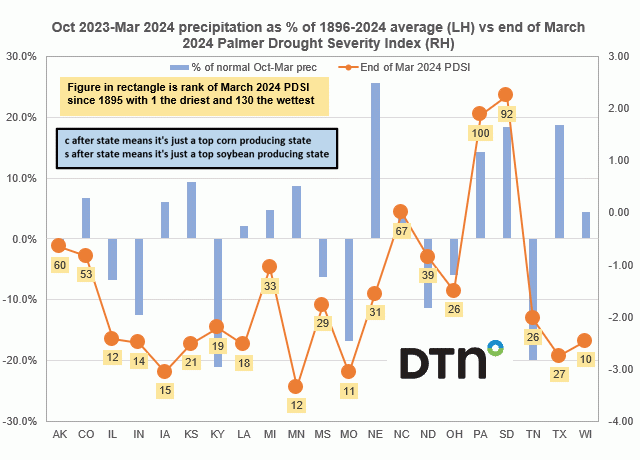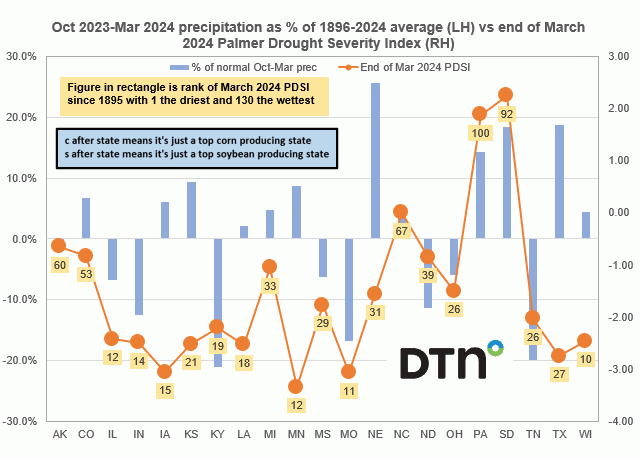Fundamentally Speaking
High Dakota Corn Planting Intentions Have Not Panned Out
New crop corn has been on the defensive for a while now, especially over the past week as weather forecasts for mid-April in much of the Midwest look conducive for plantings.
If these forecasts are verified, it will be quite a contrast from a year ago when a very cold and wet spring in much of the Upper Midwest resulted in the second lowest pace of corn plantings since 1995.
Yet again, there is concern about a slow start to corn plantings in the Upper Midwest where snow accumulations are quite large and as temperatures warm, spring flooding is a distinct possibility.
P[L1] D[0x0] M[300x250] OOP[F] ADUNIT[] T[]
The latest soil moisture anomaly maps from the NWS also show saturated soils in a large chunk of the Delta where corn plantings have already been delayed.
This is important in that though USDA's March corn prospective planting figure was 92 million acres, about a million more than the trade had anticipated, gives a little more margin for error as we have seen over the past few years final corn planted area can fall substantially from what farmer intentions were.
This graph shows the 10- and 20-year average percent changes in planted corn acreage for the top 18 producing states and the U.S. from the March intentions to the June acreage report and then those June figures till final production report along with the total March to final planted acreage change.
The 10-year period is 2013-2022 while the 20-year range is 2003-2022.
We have mentioned over the past number of years that row crop acreage has really increased in the Dakotas, but spring can come late to this part of the country and consequently final corn area often falls from what was intended.
North Dakota final corn area has averaged 2.0% below the March intentions over the past 20 years and really cold and wet conditions in three of the past four seasons have resulted in an average 4.7% fall from March to the final figure over the past 10 years, both the most of any major state.
South Dakota corn area has fallen by an average of 3.7% from the March to final over the past ten years while another northern state, Michigan, has seen a 2.2% March to final drop average since 2013.
(c) Copyright 2023 DTN, LLC. All rights reserved.






Comments
To comment, please Log In or Join our Community .